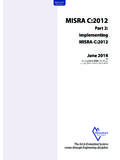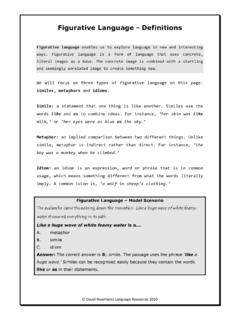Transcription of To Kill a Centrifuge - Langner
1 To kill a Centrifuge A Technical Analysis of What Stuxnet s Creators Tried to Achieve Ralph Langner November 2013 The Langner Group Arlington | Hamburg | Munich "The definitive analysis of Stuxnet" Bruce Schneier To kill a Centrifuge - 2 - Content Executive Summary ..3 Prologue: A Textbook Example of Cyber Warfare ..4 A. Exploring the Attack Vector ..5 Overpressure Attack: Silent Hijack of the Crown Jewels .. 5 Rotor Speed Attack: Pushing the Envelope .. 10 Analysis: The Dynamics of a Cyber Warfare Campaign.
2 15 B. Misconceptions about Stuxnet s Operation and Impact .. 18 Did Stuxnet Break Out of Natanz due to a Programming Error? .. 18 Did the Attackers Have the Capability to Stop the Campaign? .. 18 Can Stuxnet be used as a Blueprint for Copycat Attacks? .. 19 Are Nation-State Resources Required to Pull off Similar Attacks against the US or Their Allies? .. 20 Can Technical Security Controls Block Stuxnet-Like Attacks? .. 22 Is Active Defense Against Cyber-Physical Attacks Sufficient? .. 23 C. Inside Natanz: A Guided Tour of Plant Systems, Instrumentation, and Control.
3 24 SCADA Software .. 24 Plant Design .. 28 Sensors and Valves .. 29 Industrial Controllers .. 35 Non-Proliferation Concerns .. 37 Acknowledgements Andreas Timm, Olli Heinonen, Richard Danzig, and R. Scott Kemp provided valuable feedback in the process of writing this paper. Nevertheless any views expressed are the author s, not theirs. To kill a Centrifuge - 3 - Executive Summary This document summarizes the most comprehensive research on the Stuxnet malware so far: It combines results from reverse engineering the attack code with intelligence on the design of the attacked plant and background information on the attacked uranium enrichment process.
4 It looks at the attack vectors of the two different payloads contained in the malware and especially provides an analysis of the bigger and much more complex payload that was designed to damage Centrifuge rotors by overpressure. With both attack vectors viewed in context, conclusions are drawn about the reasoning behind a radical change of tactics between the complex earlier attack and the comparatively simple later attack that tried to manipulate Centrifuge rotor speeds. It is reasoned that between 2008 and 2009 the creators of Stuxnet realized that they were on to something much bigger than to delay the Iranian nuclear program: History s first field experiment in cyber-physical weapon technology.
5 This may explain why in the course of the campaign against Natanz, OPSEC was lossened to the extent that one can speculate that the attackers really were no longer ultimately concerned about being detected or not but rather pushing the envelope. Another section of this paper is dedicated to the discussion of several popular misconceptions about Stuxnet, most importantly how difficult it would be to use Stuxnet as a blueprint for cyber-physical attacks against critical infrastructure of the United States and their allies.
6 It is pointed out that offensive cyber forces around the world will certainly learn from history s first true cyber weapon, and it is further explained why nation state resources are not required to launch cyber-physical attacks. It is also explained why conventional infosec wisdom and deterrence does not sufficiently protect against Stuxnet-inspired copycat attacks. The last section of the paper provides a wealth of plant floor footage that allows for a better understanding of the attack, and it also closes a gap in the research literature on the Iranian nuclear program that so far focused on individual centrifuges rather than on higher-level assemblies such as cascades and cascade units.
7 In addition, intelligence is provided on the instrumentation and control that is a crucial point in understanding Iran s approach to uranium enrichment. There is only one reason why we publish this analysis: To help asset owners and governments protect against sophisticated cyber-physical attacks as they will almost definitely occur in the wake of Stuxnet. Public discussion of the subject and corporate strategies on how to deal with it clearly indicate widespread misunderstanding of the attack and its details, not to mention a misunderstanding of how to secure industrial control systems in general.
8 For example, post-Stuxnet mitigation strategies like emphasizing the use of air gaps, anti-virus, and security patches are all indications of a failure to understand how the attack actually worked. By publishing this paper we hope to change this unsatisfactory situation and stimulate a broad discussion on proper mitigation strategies that don t miss the mark. To kill a Centrifuge - 4 - Prologue: A Textbook Example of Cyber Warfare Even three years after being discovered, Stuxnet continues to baffle military strategists, computer security experts, political decision makers, and the general public.
9 The malware marks a clear turning point in the history of cyber security and in military history as well. Its impact for the future will most likely be substantial, therefore we should do our best to understand it properly. The actual outcome at Ground Zero is unclear, if only for the fact that no information is available on how many controllers were actually infected with Stuxnet. Theoretically, any problems at Natanz that showed in 2009 IAEA reports could have had a completely different cause other than Stuxnet. Nevertheless forensic analysis can tell us what the attackers intended to achieve, and how.
10 But that cannot be accomplished by just understanding computer code and zero-day vulnerabilities. Being a cyber-physical attack, one has to understand the physical part as well the design features of the plant that was attacked, and of the process parameters of this plant. Different from cyber attacks as we see them every day, a cyber-physical attack involves three layers and their specific vulnerabilities: The IT layer which is used to spread the malware, the control system layer which is used to manipulate (but not disrupt) process control, and finally the physical layer where the actual damage is created.








